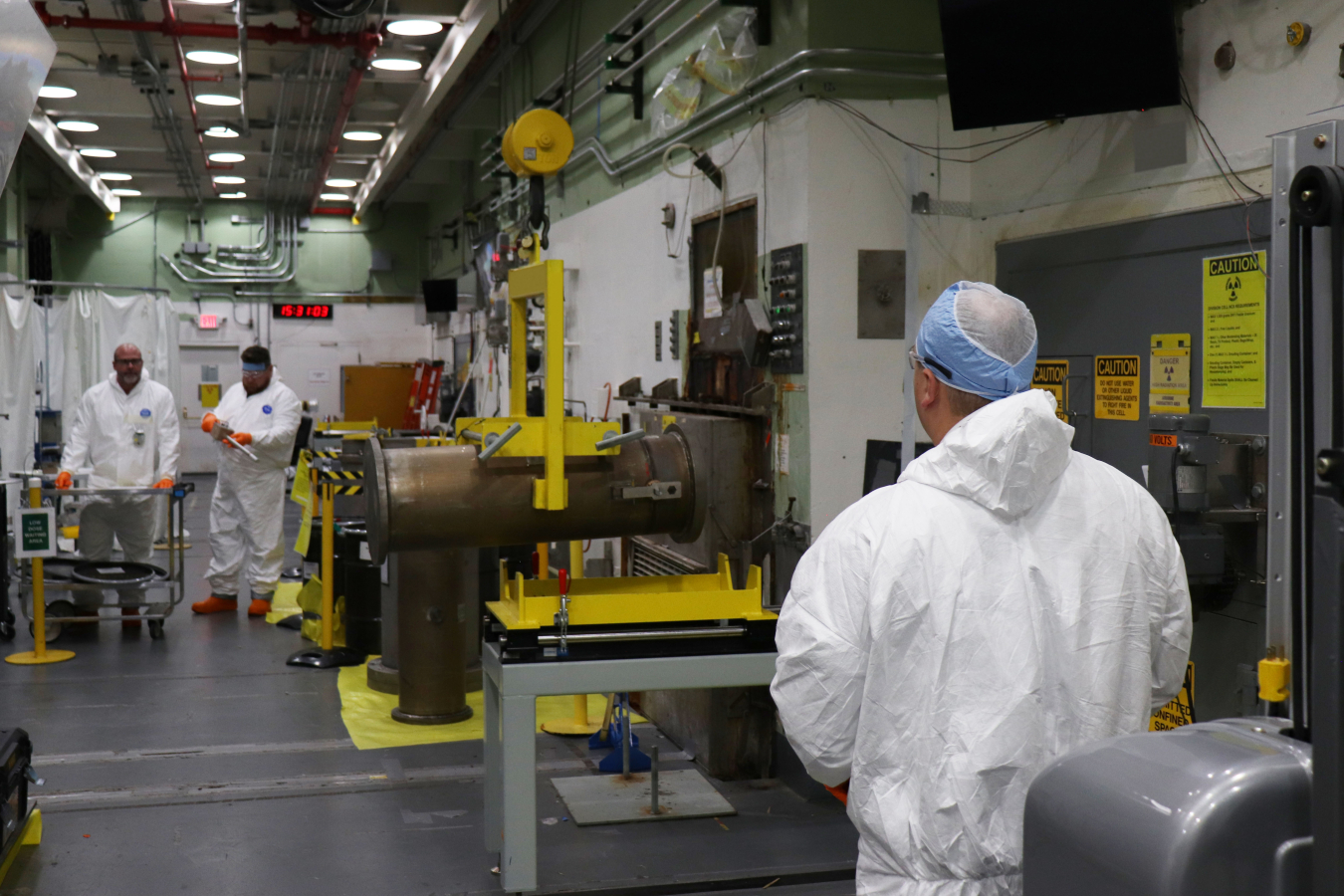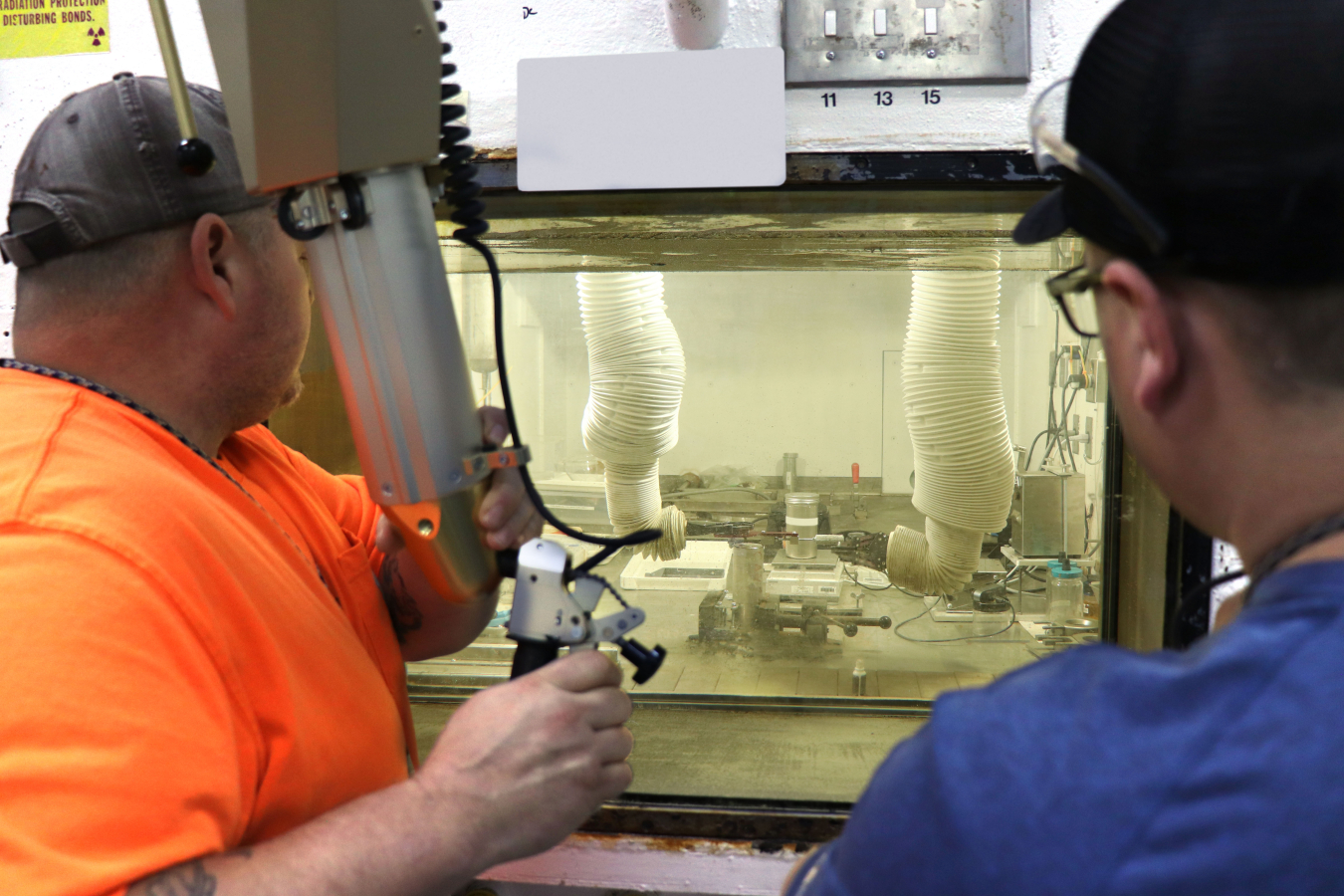The Oak Ridge Office of Environmental Management (OREM) and contractor Isotek are moving forward on the highest priority cleanup project at Oak Ridge National Laboratory (ORNL): eliminating the remaining inventory of uranium-233 stored onsite.
Office of Environmental Management
January 16, 2024
OAK RIDGE, Tenn. — The Oak Ridge Office of Environmental Management (OREM) and contractor Isotek are moving forward on the highest priority cleanup project at Oak Ridge National Laboratory (ORNL): eliminating the remaining inventory of uranium-233 stored onsite.
Isotek recently began the second phase of its current processing campaign. This portion of the uranium-233 inventory measures 15-20 times higher in radiological dose than the previous material employees have processed to date.
Isotek has processed approximately 15% of the inventory within the current campaign. The efforts underway kick off the second phase, and a third phase remains to complete the current campaign, which is slated for completion in 2026.
Previous processing activities focused on an inventory of oxides manufactured in Oak Ridge, but the material currently undergoing processing involves oxides originating from the Savannah River Site decades ago. That material contains higher concentrations of the uranium-232, which results in higher doses.
“After processing the lower dose uranium-233 oxide material during the first year of hot cell operations, we were able to gain proficiency and implement many lessons learned for this higher dose material,” said Isotek Project Manager Sarah Schaefer.

Processing is now underway on the second phase of Isotek’s current processing campaign. This portion of the inventory measures 15-20 times higher in radiological dose than the previous material employees have processed to date.
The nation’s inventory of uranium-233 has been stored at ORNL for decades. It was originally created in the 1950s and 1960s for potential use in reactors, but it proved to be an unviable fuel source.
OREM and Isotek are tasked with eliminating the material because it presents risks and is costly to keep safe and secure. The Uranium-233 Disposition Project is removing this inventory of Cold War-era nuclear material stored in the world’s oldest operating nuclear facility.
Half of the original uranium-233 inventory stored at ORNL was directly disposed of in 2017, while the remaining material required processing and downblending to convert it into a form that can be safely transported and disposed of. Isotek started processing lower dose material in gloveboxes in 2019, and then began processing higher dose material in hot cells in 2022.
As part of the processing operations, employees remove transuranic material and lessen enrichment levels to avoid the potential for criticality, or an accident resulting from an inadvertent, self-sustaining nuclear chain reaction. They are also extracting thorium-229, a rare medical isotope, to advance next generation cancer treatment research.
-Contributor: John Gray
To receive the latest news and updates about the Office of Environment Management, submit your e-mail address.

